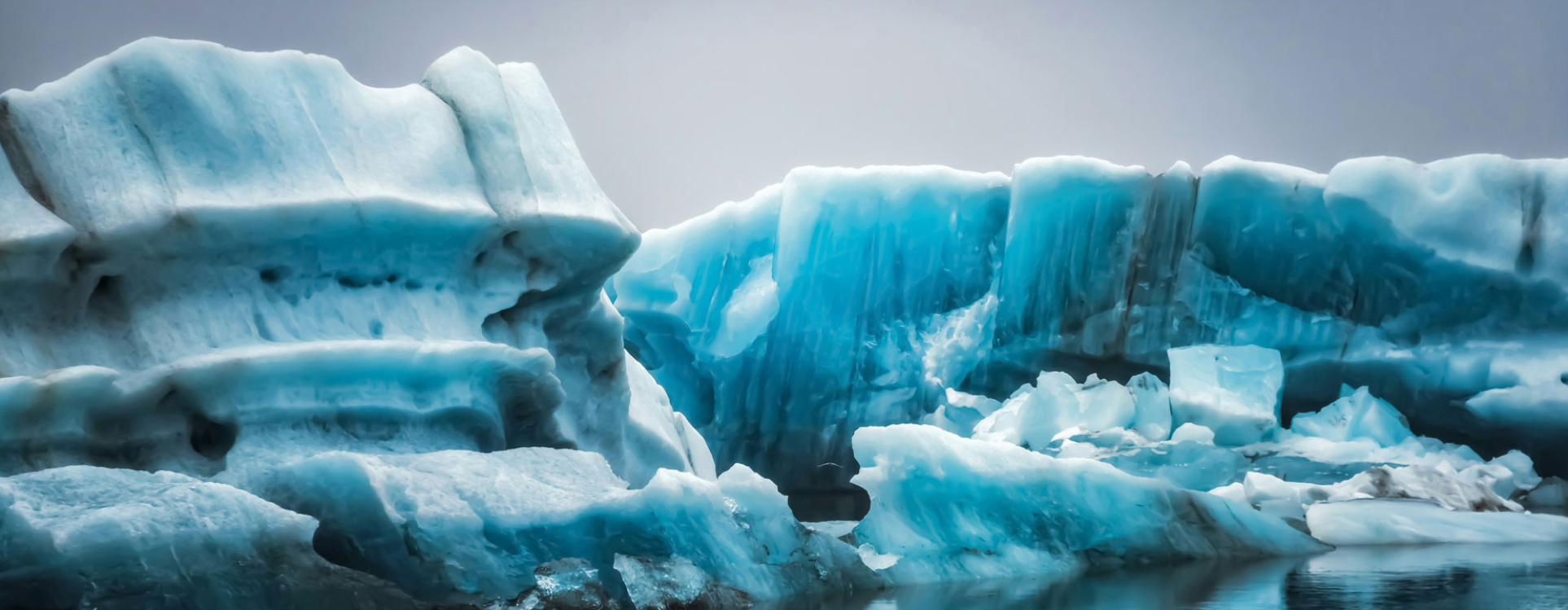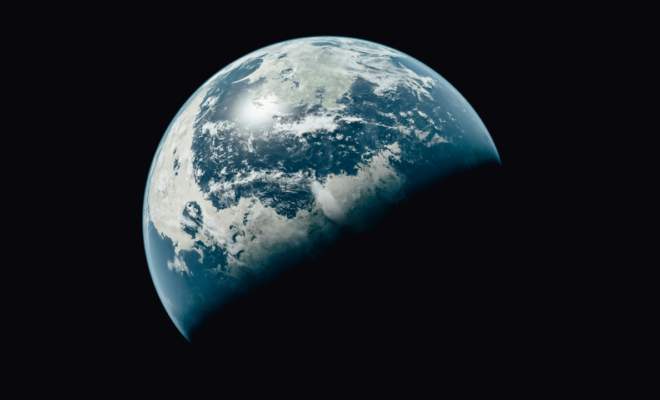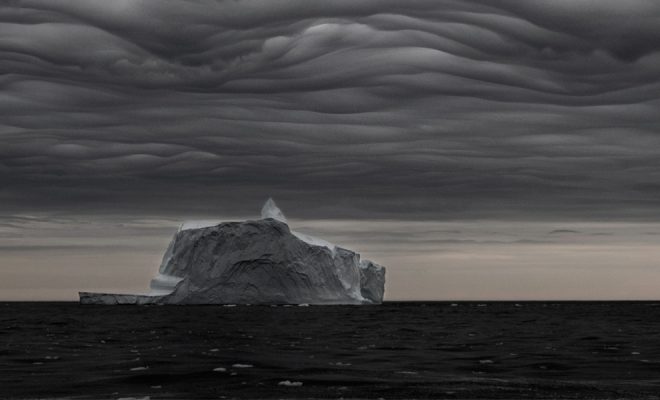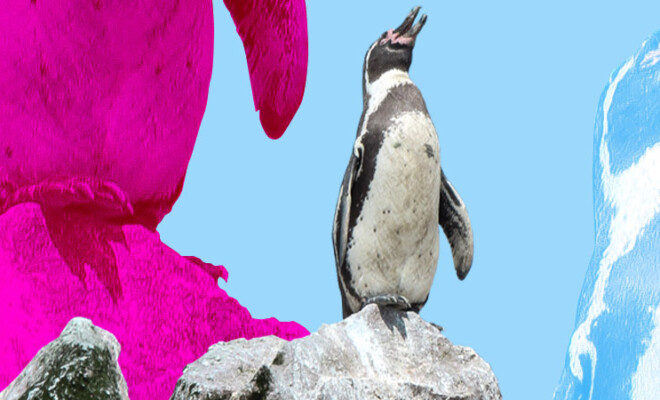The scientific community is sounding alarms about the health of the Arctic Ocean. In 2023, its sea ice levels dropped to the second-lowest level on record. Over 30 years, the Earth’s northernmost ocean has lost 75% of its ice cover. Recent reports confirm this trend, such as NOAA’s Arctic Report Card and the National Snow and Ice Data Center‘s (NSIDC) 2023 publication.
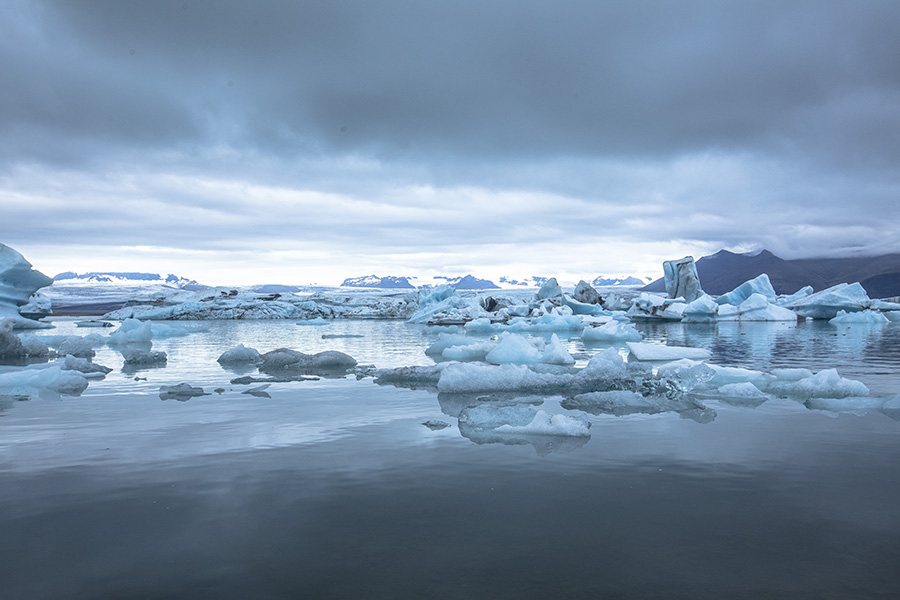
The Arctic is undergoing an accelerated melting cycle due to global warming. ©Freepick
When Will the FIASY Happen?
Scientists from NOAA and U.S. universities predicted in 2020 that by 2035, we could witness an unprecedented event: the first ice-free Arctic summer, popularly referred to by scientists as FIASY (First Ice-Free Arctic Summer Year). The most pessimistic ask how much longer the Arctic will exist as we know it.
A widely shared graph, known as the “Arctic Death Spiral,” illustrates the monthly evolution of ice volume (in thousands of km³) from 1979 to 2024.
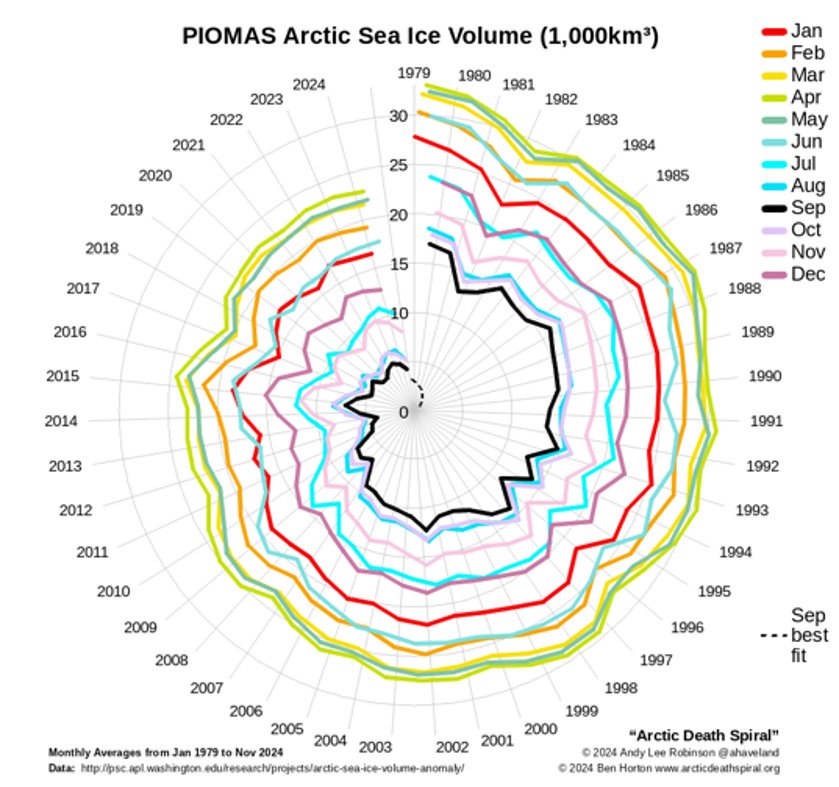
The “Arctic Death Spiral,” from January 1979 to November 2024, is based on data from PIOMAS (Pan-Arctic Ice Ocean Modeling and Assimilation System), a simulation model designed to estimate sea ice mass in the Arctic. It uses satellite observations and weather data to project the extent and thickness of ice over time. The black spiral approached “zero” this past September, marking the lowest recorded ice volume. © 2024 Andy Lee Robinson @ahaveland © 2024 Ben Horton www.arcticdeathspiral.org
According to polar researchers, an ice-free Arctic would initially occur in summer, with the ice potentially returning in winter. This seasonal melting marks a transition toward deeper climate change. The worst-case scenario is that the sea remains liquid even in winter. While projections a decade ago placed this scenario around 2100, most recent studies now anticipate it mid-century.
Are We Nearing the Tipping Point?
The Arctic is warming at some of the fastest rates on Earth. Scientists’ most pressing question is how close we are to the tipping point of ice loss—the moment when the situation becomes irreversible.
There is an intense scientific debate on this critical topic, which is fundamental for any adaptation strategy. The irreversible ice loss would lead to unpredictable and likely devastating climate impacts worldwide.
The Poles Are Warming Faster
Global warming impacts the poles more intensely than other regions. Since 2022, the phenomenon of polar amplification has been confirmed. This refers to changes in net radiation balance, resulting in more pronounced temperature variations in polar regions than the global average. The Arctic, in particular, has warmed at twice the rate of the tropics since the mid-20th century. Accelerated melting in Antarctica further corroborates this phenomenon.
A Worrying Chain of Effects
The loss of Arctic ice has numerous negative consequences, many already being felt. These can be grouped into five main categories:
1- Reduced Albedo and Positive Feedback of Warming
We have already explained in more detail what albedo is and its importance in climate science: it is a coefficient that indicates the percentage of solar radiation a surface reflects compared to the amount it receives.
Ice and snow have the highest albedo in nature (0.70–0.90), reflecting most solar radiation. In contrast, water has a lower albedo (0.03–0.10), absorbing more heat. More water and less ice mean greater heat absorption, amplifying the warming cycle.
2- Disruption of Ocean Currents
Most scientists have warned for years that melting polar regions, particularly Greenland, has significant consequences for ocean dynamics.
In the North Atlantic, colder and denser water sinks and flows southward through the ocean’s deepest layers, creating the so-called Atlantic Meridional Overturning Circulation (AMOC). This is a circulation of water masses driven by differences in their density.
However, the freshwater from the melting ice is lighter than salty water, so it “floats” on the surface, disrupting the usual functioning of the AMOC engine, especially the Gulf Stream, the massive oceanic “river” that originates in the Gulf of Mexico and reaches northern Europe, directly influencing Europe’s climate.
The weakening of the AMOC could reach a tipping point that triggers a “domino effect” on the dynamics of all the world’s oceans, altering climate balance and marine ecosystems.
3- Changes in General Atmospheric Circulation
The melting of Arctic ice also affects global climate patterns by reducing the temperature gradient between the Arctic and lower latitudes. This could influence the path of the polar jet stream, the high-altitude air current that circulates around 60° latitude in both hemispheres, at the boundary between the troposphere and the stratosphere, 9–12 kilometres above the ground.
The jet stream is a “highway” that determines rainfall and storm systems. Its disruption would lead to significant changes in these systems and an increase in the frequency of extreme weather events in regions such as Europe and North America.
4- Attention to Permafrost Methane
Global warming is accelerating the thawing of permafrost, the permanently frozen subsoil in Arctic regions (you can find more details here). This phenomenon releases large quantities of methane (CH₄) and carbon dioxide (CO₂), the most well-known greenhouse gases, trapped in organic matter accumulated over millennia and preserved by the cold.
Methane, in particular, is an extremely potent gas: it is estimated to have 33 times the warming effect of CO₂. Its massive release into the atmosphere would trigger a catastrophic “climate bomb.”
5- Rising Sea Levels
Polar melting—including that of Greenland, the Arctic Ocean, and Antarctica—adds to the total volume of water and raises sea levels. This phenomenon, combined with the thermal expansion of seawater caused by rising temperatures, is already causing coastal flooding and the salinization of aquifers critical for agriculture and drinking water supplies.
The loss of glacier and polar ice sheet mass is estimated to contribute about 670 gigatons of water to the oceans annually, the equivalent of 268 million Olympic swimming pools.
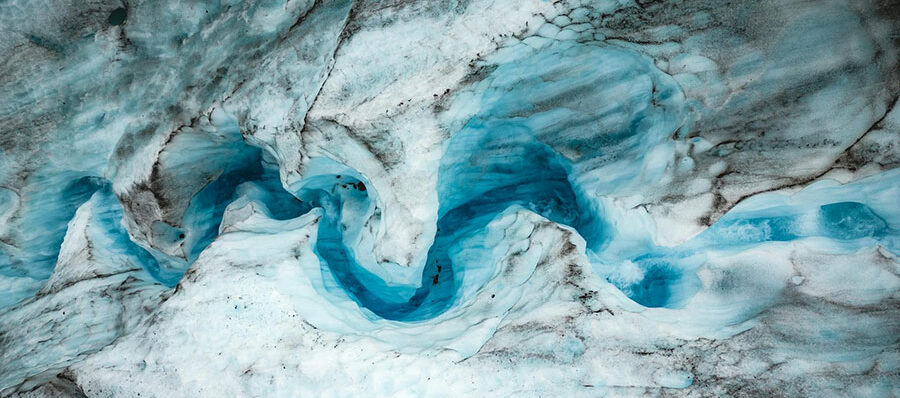
Global warming is accelerating the thawing of permafrost, the permanently frozen subsoil in Arctic regions. © Tomas Malik/ Pexels
Climate Action Now
The good news from scientific reports is that ice loss is not irreversible; recovery is possible if Arctic temperatures decrease. This requires a massive reduction in fossil fuel emissions. However, successive COP meetings have achieved limited progress despite the urgency.
The scientific community emphasizes communicating science effectively to raise public awareness. History shows that when citizens apply pressure, governments and companies act, and international cooperation becomes possible. We are responsible for mobilising and pushing political and institutional powers to act.


